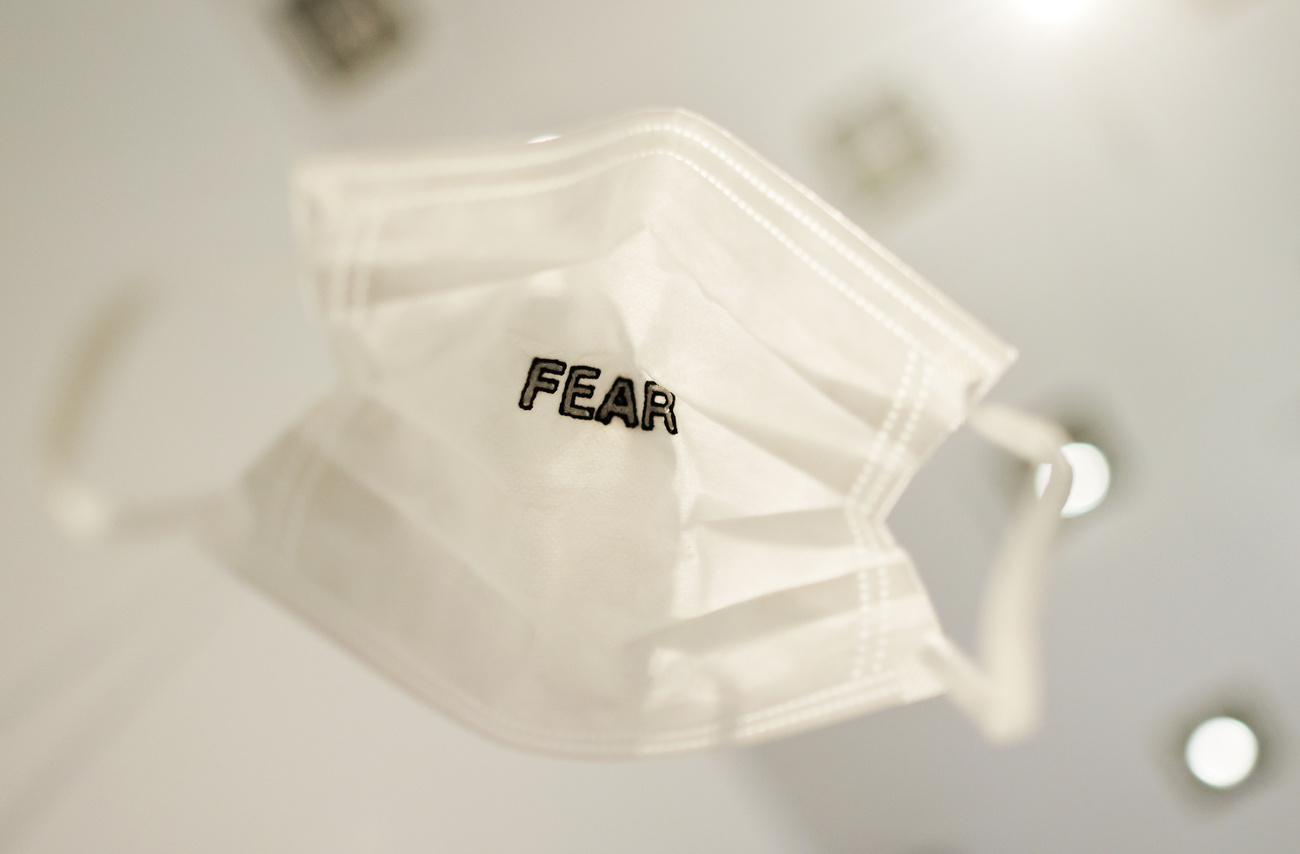Brain’s ‘fear regulator’ could help treat anxiety disorders

Almost one in six people in Europe is affected by persistent anxiety. Researchers in Switzerland have now localised micro-circuits in the brain whose malfunctions promote anxiety – a discovery that could transform the therapy of anxiety disorders.
Existing therapies have only been partially effective because there is a lack of concrete knowledge of neurobiological processes in anxiety states, the University of Bern said in a statementExternal link on Friday.
It was already known that distinct nerve cells interact together to regulate fear responses by promoting or suppressing them. Different circuits of nerve cells are involved in this process. A kind of “tug-of-war” takes place, with one brain circuit “winning” and overriding the other, depending on the context, the statement said.
“If this system is disturbed, for example if fear reactions are no longer suppressed, this can lead to anxiety disorders,” it said.
A group led by Stéphane Ciocchi at the University of Bern and Andreas Lüthi at the Friedrich Miescher Institute in Basel has discovered that the amygdala – one of two almond-shaped clusters of cells near the base of the brain – plays a much more active role than previously thought.
“Not only is the central amygdala a ‘hub’ to generate fear responses, but it contains neuronal micro-circuits that regulate the suppression of fear responses,” the researchers said.
In mice models, Ciocchi and Lüthi showed that inhibition of these micro-circuits led to long-lasting fear behaviour. However, when they were activated, behaviour returned to normal despite previous fear responses.
This showed that neurons in the central amygdala were highly adaptive and essential for suppressing fear, they concluded.
Human application
“We were surprised how strongly our targeted intervention in specific cell types of the central amygdala affected fear responses,” said Ciocchi, assistant professor at the Institute of Physiology. “The […] silencing of these specific neurons completely abolished the suppression of fear and provoked a state of pathological fear.”
The results have been publishedExternal link in the scientific journal Nature Communications.
In humans, dysfunction of this system could contribute to the impaired suppression of fear memories reported in patients with anxiety and trauma-related disorders. A better understanding of these processes would help develop more specific therapies for these disorders, the researchers said.
“However, further studies are necessary to investigate whether discoveries obtained in simple animal models can be extrapolated to human anxiety disorders,” Ciocchi added.

In compliance with the JTI standards
More: SWI swissinfo.ch certified by the Journalism Trust Initiative


You can find an overview of ongoing debates with our journalists here. Please join us!
If you want to start a conversation about a topic raised in this article or want to report factual errors, email us at english@swissinfo.ch.